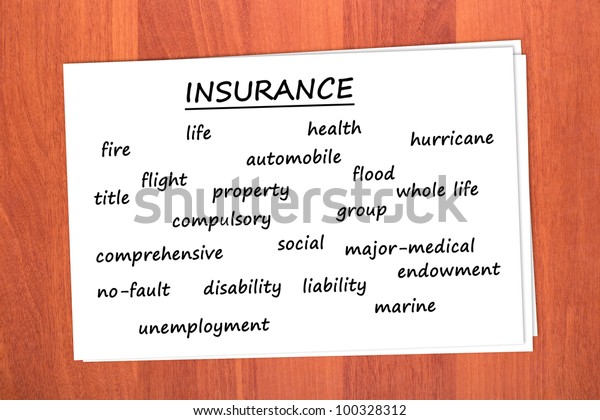Whole life insurance is the most basic type of permanent life insurance. Permanent life insurance is basically that the protected person is covered for the duration of their life as long as premiums are paid on time. Term life insurance is different than the permanent life insurance. covers the protected person for a set amount of time. Whole life insurance like permanent life insurance offers a saving component called cash value. The cash value of the person’s policy increases and the person may have the option to withdraw funds. If something goes wrong the whole life insurance policy serve as a source of emergency funds for a person and the person may be able to take out a loan against the policy.

What is Insurance
Before discussing whole life insurance it is essential to discuss What is Insurance. Insurance is a term of economics and law. It is a contract in which an entity or individual receives financial safety and remuneration against losses from an insurance company. There are many kinds of insurance policies. Health, homeowners, auto and life are the most general types of insurance. The core components that most make the insurance policies are the policy limit, deductible and premium.
Whole life Insurance vs Term life Insurance
As we begin to investigate the life insurance options, we will most likely come across the two basic kinds of life insurance: whole life insurance and term life insurance. Here are the basic definitions.
Whole life Insurance
Whole life insurance is the insurance we buy for the length of our life. Unlike term insurance, whole life policies don’t lapse. The policy will stay in effect until we pass or until it is repealed. The starting cost of premiums is higher than it is with term insurance due to the length of the policy. But, the part of the premiums we pay builds up into cash value, which we can use later in life.
Term life Insurance
Term life insurance is the insurance we buy to cover a specific term, such as 10 or 20 years. Term life insurance policies do not expand cash value. Premiums tend to be lower because of the probability that we will outlive the policy. When the policy ceases, we must buy another term and pay higher premiums if we still wish to have life insurance.
Here is the chart showing differences between these two types:
| Term Life Insurance | Whole Life Insurance |
|---|---|
| Premiums go up every time you have to renew your policy | Premium stay the same |
| Only pays a death benefit if premiums are current | Only pays a death benefit if premiums are current |
| Lower premiums when you’re young but they increase as you age | More expensive premiums |
| Does not have a cash value | Has a cash value |
| Coverage is only for a term such as 5, 10, or 20 years | Coverage is for a lifetime as long as premiums are paid |
| Provides a death benefit | Provides a death benefit |
Summary
Insurance is a term of economics and law. Whole life insurance is the insurance we buy for the length of our life. Term life insurance is the insurance we buy to cover a specific term, such as 10 or 20 years. Term life insurance policies do not expand cash value.
Benefits of Whole Life Insurance
Whole life insurance have certain benefits that can make it an appealing choice.
-
The person’s are fixed and will not go up regardless of the conditions of the market.
-
The person may be able to take out a loan and may be able to withdraw funds.
-
As long as the person make the required premium payments his death benefit is guaranteed.
-
If the person buy a whole life insurance policy from a mutual insurance company, the person may receive annual dividend payments on his policy.
-
A person can use the whole life insurance policy to effectively build supplemental retirement income.
-
If a person want to help his favorite causes he can use his insurance policy in several ways. Charitable giving can also provide income tax benefits now, while the person is alive.
Disadvantages of the whole life Insurance
Whole life insurance policy have the following disadvantages.
-
The cash value of a whole life insurance policy will start to built after three years of continual insurance premium payments
-
Keys for getting the right policy is the careful research, a solid relationship with the insurance agent and the clear understanding of the his insurance priorities and needs.
-
There are subtle differences between the policies in whole life insurance and it can be extremely complicated.
-
Whole life Insurance policies have a surrender period. If the person want to withdraw a money he must a surrender charge, usually around 10 percent of the account value.
Summary
Whole life insurance have certain benefits that can make it an appealing choice. The person may be able to take out a loan and may be able to withdraw funds. Whole life insurance also have some disadvantages. The cash value of a whole life insurance policy will start to built after three years of continual insurance premium payments.

Cash values, Taxes and Dividends
Cash Values
In whole life insurance policies the premium paid go toward increasing the cash values and if the person is willing to pay more this will increase his death benefit. The person cash value and the death benefit can never decrease but when a person start withdrawing cash value from the policy and stop paying premium then his death benefit and cash value can be decrease .
Taxes
With a whole life insurance policy the person pay the premiums with after-tax dollars. The cash value grows without taxation. The person would only be taxed if his withdrawals from the policy exceed than the amount he put on it. The person can remove gains tax-free by taking a loan off the policy.
Dividends
The policy pays a dividend. The dividends are not taxed. At the end of the year company pays amount in dividend on their policy and they do not pay taxes on that amount. The persons can take money in the form of check and can reinvest it in the cash value of the policy.
The strength of Whole Life Insurance Company
Whole life Insurance policies are long term investment and the person relationship with the insurance company will last for a life time. Picking a company with the highest ratings both for customer service and financially stability is the key. The person make sure that he feels comfortable with his insurance broker after doing his homework.
According to Consumer Search. com the overall highest rating companies are following:
-
New York Life
-
Guardian
-
Mass Mutual
-
Northwestern Mutual
-
TIAA-CREF
Summary
In whole life insurance policies the premium paid go toward increasing the cash values. With a whole life insurance policy the person pay the premiums with after-tax dollars. The policy pays a dividend. The dividends are not taxed. Whole life Insurance policies are long term investment

Frequently Asked Questions
Is a whole life insurance policy a good investment?
When it’s Worth it to invest in life insurance. Whole life insurance is commonly a bad investment unless you required permanent life insurance coverage. If you have already maxed out retirement accounts and have a diversified portfolio whole life insurance might be a worthwhile investment, if you want lifelong coverage.
How long does it take for whole insurance to build cash value?
You should expect at least 10 years to build up enough funds to tap into whole life insurance cash value. Talk to the financial advisor about the expected amount of time for your policy.
What is the downside of whole life insurance?
The single biggest downside of the whole life insurance is the cost. However, the cost of whole life insurance can easily exceed a term policy with the same death benefit by thousands of dollars a year.
Is whole life Insurance an asset?`
Whole life insurance is an asset in which the cash value grows tax delayed. A completely structured whole life policy offers guaranteed cash value growth and you may never be taxed on the growth of your cash value if you utilize policy loans.
Conclusion
Whole life insurance is the most basic type of permanent life insurance. Whole life Insurance policy is a great product if you have a long term insurance need and long range financial flexibility and wants to supplement your retirement savings. Before going down to the road of whole life Insurance the person map-out exactly what his overall financial picture is. Once the person have decided to invest in whole life insurance, understand its limitation and benefits and commit to it, so he can best utilize the policy to achieve his financial goals.
Related Topics
How does life insurance work?